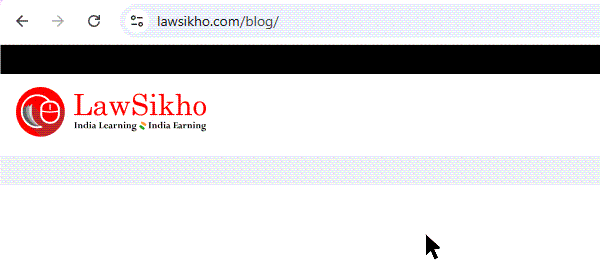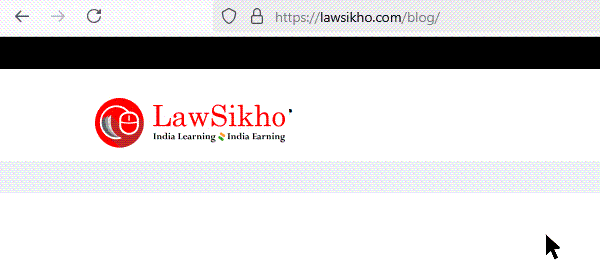Learn how to automate the conversion of preference shares into equity shares using AI tools like ChatGPT. This step-by-step guide covers compliance with sections 55, 62, 48, and Rule 9 of the Companies Act, 2013, as well as the drafting of resolutions, ROC filings, and more, making it ideal for corporate lawyers and startup professionals.
Table of Contents
Recap
Remember Priya from our article on “Share Swap 101: How to Flip Preference Shares into Equity”?
She was the panicked first-year associate who got handed a preference share conversion task on her very first week and had no idea where to start.
In that guide, we walked her (and you) through the complete legal framework—from understanding the difference between preference and equity shares to navigating section 55 of the Companies Act, Rule 9 of the Share Capital and Debentures Rules, and the entire step-by-step conversion process using the NovaEdge Technologies case study.
We covered how to check the Articles of Association, review terms of issue, draft board resolutions, handle section 48 compliance for shareholder rights, issue equity shares, and complete ROC filings. By the end, Priya had a solid foundation in the law governing preference share conversions.
But here is what happened next.
Fast forward three months.
It is 11:47 PM on a Tuesday, and Priya gets another urgent call: “Priya, remember that NovaEdge Fintech deal? They need to convert ₹12 crores worth of preference shares into equity by Thursday. The board wants all conversion documents finalized and filed with ROC before the weekend.”
This time, Priya does not panic.
Instead, she opens her laptop, launches ChatGPT, and begins typing her first prompt. Within 90 minutes, she has systematically worked through the entire conversion process using AI assistance.
By 1:15 AM, she was reviewing polished documents instead of starting from scratch.
This was possible because Priya upgraded herself to use AI for drafting work.
In this article, I am going to show you exactly how Priya used AI to get the conversion done.
You will learn how to use ChatGPT to automate the preference share conversion workflow, from checking AoA permissions to drafting resolutions and ROC filings.
We will use the same legal framework from our previous article, but this time with real clauses from public documents—Jana Small Finance Bank’s Share Subscription Agreement (2022) and Unilever Plc’s Articles of Association (2024); and will take the help of AI to make our work even easier.
Important Disclaimer: All clauses and examples used in this article are adapted from publicly available documents and are used solely for educational purposes to illustrate AI-assisted legal workflows.
By the end of this guide, you will have Priya’s complete AI toolkit that can transform how you handle share conversions, turning what used to be all-nighters into efficient, systematic processes.
Case Study: NovaEdge Fintech’s share conversion
To demonstrate AI in action, I will continue with our fictional company, NovaEdge Fintech Pvt. Ltd., from the previous article. But this time, we are giving it a real documentation backbone.
For this case study, NovaEdge’s legal documents are adapted from publicly available sources:
- Share Subscription Agreement: Based on Jana Small Finance Bank’s SSA (2022)
- Articles of Association: Based on Unilever Plc’s AoA (2024)
These are actual clauses from real companies’ public filings, which give our AI prompts authentic legal language to work with.
The beauty of using AI with real documentation is that it can analyse complex legal language and extract exactly what you need for compliance.
Quick Setup: NovaEdge issued ₹12 crores of Compulsorily Convertible Preference Shares (CCPS) to investors last year. The conversion trigger has been hit, and now these CCPS need to be converted to equity shares at a 1:1 ratio.
Let me show you how Priya handles this using AI, step by step.
How to convert preference shares into equity shares
The 6-step process workflow will show you how preference shares can be converted into equity shares, and that too with the help of AI.
Instead of manually working through each compliance requirement, Priya now uses AI to systematically handle the entire conversion process.
Here is how she breaks it down:
Step 1: Review articles of association
Priya uses AI to check if the AoA allows preference share conversions, and if not, draft amendment language. For this, she uploads the entire AoA to ChatGPT and asks it to identify all conversion-related clauses and suggest specific amendments.
The Articles of Association (AoA) are like a company’s rulebook. They explain how the company will be managed, what the directors and shareholders can do, how meetings are held, and how important decisions are made. It works like an agreement between the company and its members to make sure everything runs smoothly and fairly. Along with another document called the Memorandum of Association, it forms the company’s basic set of rules.
Step 2: Extract terms from the share subscription agreement
From the Share Subscription Agreement (SSA) that Priya has, which contains details about how investors can convert their investment into shares, when this can happen, and under what conditions. Instead of reading the entire agreement manually, she uses AI (ChatGPT) to quickly extract the key points, such as the conversion ratio, the events that trigger conversion, the timeline, and any specific conditions. The AI then organizes this information into a simple summary table, making it much easier for her to understand the important terms without going through long and complex legal text.
Step 3: Draft all meeting documents
Priya uses AI to create board meeting notices, resolutions, EGM notices, and explanatory statements with consistent language. For this, she feeds all findings from Steps 1-2 into one comprehensive prompt to generate the complete document set.
Step 4: Analyse compliance requirements
Priya uses AI to determine if additional shareholder approvals are needed under Section 48 or Section 62 of the Companies Act, 2013. For this, she describes the specific conversion scenario and asks for a targeted compliance analysis.
Step 5: Plan equity share issuance
Priya uses AI to generate checklists for share allotment, register updates, and certificate issuance. For this, she requests detailed procedural checklists with timelines and responsibility assignments.
Step 6: Prepare ROC Filings
Priya uses AI to assist her in filing Form PAS-3, MGT-14, and compile all required annexures for regulatory submission. For this, she asks for specific form language and comprehensive filing checklists with deadlines.
The beauty of Priya’s AI-powered approach is that each step builds on the previous one. AI remembers her analysis from Step 1 when drafting documents in Step 3, ensuring everything connects seamlessly.
Let me show you how this works in practice with simulated prompting.
A quick reality check to understand how AI works
Before Priya starts typing her prompts, there’s something crucial you need to understand about working with AI tools like ChatGPT.
Better prompts will give better results
This is the golden rule.
Think of ChatGPT like a brilliant junior associate who is incredibly knowledgeable but needs clear, detailed instructions to deliver exactly what you want. Feed it vague prompts, and you will get generic responses. Give it specific context, detailed requirements, and clear objectives, and you will get precisely targeted legal analysis.
Here is what makes a real difference:
Quality matters more than cost
If you are using the free version of ChatGPT, you are working with a capable but limited tool. The paid versions (ChatGPT Plus or Pro) consistently deliver more sophisticated analysis, better legal reasoning, and more nuanced document drafting. For complex legal work like CCPS conversions, that upgrade pays for itself in the first transaction.
Every conversation is unique
Just like your Instagram feed differs from your friend’s based on your interactions and preferences, ChatGPT’s responses evolve based on how you communicate with it. Use the same prompt twice, and you might get different approaches—sometimes that’s exactly what you want for exploring alternative strategies.
AI learns from you
The more you interact with these tools, the better they become at understanding your style, your firm’s preferences, and the level of detail you need. Think of it as training your digital associate.
The responses you will see in the following examples represent high-quality interactions using specific, detailed prompts. Your results might vary based on how you frame your questions, but the framework Priya uses will give you a solid foundation to build from.
Now, let’s see how Priya transforms her late-night panic into systematic efficiency.
Using AI: How ChatGPT handles each step of the share conversion process
Step 1: Using AI to review and amend articles of association
Priya’s challenge: Instead of manually reading through 50+ pages of Articles of Association to find conversion-related clauses, she asks AI to identify all relevant provisions and assess compliance.
The smart approach: Upload the entire AoA document to ChatGPT and let AI do the heavy lifting.
Priya’s prompt strategy:
- Upload the complete AoA document
- Ask AI to identify ALL clauses relevant to share conversion
- Request a specific analysis on conversion permissions
- Get amendment suggestions if needed
First Prompt:
“I need your help analyzing our company’s Articles of Association for a preference share conversion project. Please:
1. Identify ALL clauses relevant to converting preference shares into equity shares
2. Analyze whether the current AoA explicitly permits such conversions
3. If not permitted, suggest specific amendment language
4. Flag any provisions that might impact the conversion process
Context: Converting ₹12 crores of CCPS into equity shares at 1:1 ratio under Companies Act 2013.”
Click here to see the response.
What AI found: ChatGPT identified three key articles (4, 5, and 9) and provided a comprehensive analysis. The key finding: “The current AoA does NOT explicitly permit the conversion of preference shares into equity shares.”
ChatGPT’s analysis revealed:
- Article 4 provides general enabling clauses for shares with attached rights
- Article 5 deals with redemption but implies flexibility for convertible terms
- Article 9 allows modification of class rights with proper approvals
- Critical gap: No express provision for CCPS conversion mechanics
Most importantly, ChatGPT did not just identify the issue—it provided a complete solution by drafting:
- A new conversion clause with specific legal language
- Suggested amendments to Article 4
- Procedural guidance for board and shareholder approvals
- Compliance roadmap linking to Section 55 and Rule 9
Priya’s reality check: Wait – this does not make practical sense. If NovaEdge issued CCPS with specific conversion terms in 2022, their legal team would have already ensured AoA compliance before issuance. You cannot legally issue convertible preference shares without AoA authorization.
Practical Insight: In real transactions, AoA amendments for conversion rights happen before CCPS issuance, not during conversion. However, ChatGPT’s analysis is still valuable for:
- Due diligence verification: Confirming existing conversion provisions are adequate
- Template language: Having ready-to-use amendment clauses for future transactions
- Compliance mapping: Understanding which AoA provisions affect conversion processes
- Gap identification: Spotting procedural details that might be missing
Priya’s takeaway: While the AoA likely already permits conversion (since CCPS were validly issued), ChatGPT’s systematic analysis provides useful verification and identifies related provisions that could impact the conversion process. The detailed suggested amendments also serve as excellent templates for future transactions.
Step 2: Extract key CCPS terms from SSA using ChatGPT
Priya’s next challenge: Now she needs to review the original Share Subscription Agreement to extract the exact conversion terms, triggers, and conditions. SSAs can be 30-50 pages with complex defined terms scattered throughout.
The AI advantage: Instead of manually hunting through definitions, schedules, and annexures, AI can parse the entire document and extract only conversion-relevant provisions.
Priya’s systematic approach:
- Upload the complete SSA document
- Ask AI to locate all conversion-related clauses and definitions
- Extract specific conversion mechanics (ratio, triggers, timeline)
- Verify compliance with Section 55 and Rule 9 requirements
- Identify any gaps or ambiguities that need clarification
Second prompt:
“I have uploaded our Share Subscription Agreement and you need to extract all terms related to CCPS conversion. Please:
1. Identify the definition of “Investor CCPS” and all conversion-related terms
2. Extract the specific conversion ratio, triggers, and timeline
3. List the exact procedural steps required for conversion
4. Verify if the terms comply with Section 55 of the Companies Act 2013 and Rule 9 of the Share Capital Rules
5. Flag any missing elements that could create compliance issues
6. Provide a summary table of key conversion terms for quick reference
Context: We need to convert ₹12 crores of CCPS as per the SSA terms.”
Click here to see the response and here to see the complete conversation.
Why ChatGPT for this step: ChatGPT’s document analysis capabilities make it perfect for parsing complex legal documents and extracting key terms systematically.
What ChatGPT found: The analysis was remarkably thorough. ChatGPT extracted the complete conversion framework with precise details:
Key Discovery: ₹120 crores of Series A CCPS (not ₹12 crores as initially mentioned) with sophisticated dual conversion triggers:
- Voluntary Conversion: Anytime after April 1, 2023, at the lower of ₹3000 crore valuation or merchant banker valuation
- Mandatory Conversion: Earliest of IPO filing date minus 1 day, August 31, 2029, CET1 ratio falling to 7%, or RBI non-viability determination
Advanced analyse by ChatGPT:
- Non-cumulative, unsecured, non-redeemable structure
- Basel III compliance requirements
- CET1 ratio monitoring triggers
- Sophisticated valuation methodology (merchant banker vs. IPO pricing)
- 16% discretionary dividend structure
Critical compliance insight: ChatGPT confirmed Section 55 and Rule 9 compliance but flagged several potential issues:
- RBI approval is required if the post-conversion equity holding exceeds 9.99%
- AoA amendment needed (consistent with Step 1 findings)
- Merchant banker appointment procedures need clarification
- Filing requirements: PAS-3, MGT-14, and potentially FC-GPR for FDI compliance
Regulatory Sophistication: ChatGPT caught advanced regulatory nuances, including Basel III requirements, Banking Regulation Act compliance, and CET1 monitoring, indicating this is likely a banking/financial services company structure.
The Game-Changer: Instead of manually creating conversion timelines, ChatGPT provided:
- A comprehensive compliance matrix
- Ready-to-use summary table with all key terms
- Gap analysis identifies missing procedural elements
- Specific filing requirements roadmap
This analysis reveals the transaction is far more complex than initially apparent, involving banking regulations, foreign investment rules, and sophisticated trigger mechanisms.
Priya’s takeaway: In 5 minutes, Priya extracted everything needed from a 40+ page SSA. More importantly, AI caught the RBI approval requirement that could have delayed the entire transaction if discovered during execution. The summary table alone saves hours of manual compilation and becomes a perfect reference for board presentations.
Step 3: Generate board resolutions and shareholder notices with AI
Priya’s final challenge: She needs to prepare all the documents for the board meeting and subsequent shareholder meeting—notice of board meeting, board resolution, EGM notice, and explanatory statement under Section 102.
The traditional way: Priya would spend 2+ hours drafting each document separately, ensuring cross-references are consistent, and making sure statutory language is perfect across all papers.
The AI way: One comprehensive prompt generates all interconnected documents with consistent language and proper cross-referencing.
Priya’s third prompt:
I need to prepare all documents for NovaEdge Fintech’s CCPS conversion process. Please draft:
1. Notice of Board Meeting (agenda: AoA amendment + CCPS conversion approval)
2. Board Resolution covering:
– AoA amendment to add Article 7A (conversion provisions)
– Approval of ₹12 crores CCPS conversion per SSA terms
– Authorization for EGM to seek shareholder approval
3. Notice of EGM for shareholders
4. Explanatory Statement under Section 102 explaining:
– Why AoA amendment needed
– CCPS conversion details and benefits
– Regulatory compliance requirements
Use proper Companies Act 2013 language. Include specific details: Series A CCPS, voluntary conversion trigger, RBI approval requirements if shareholding >9.99%.
Click here to see the response/documents and here to see the complete conversation.
AI Output: Within minutes, ChatGPT generated all four documents with consistent language, proper statutory references, and seamless cross-referencing. Each document referenced the others appropriately, and the explanatory statement clearly explained the conversion rationale to shareholders.
Important reality check: These documents require human review and completion of specific details (dates, amounts, DIN numbers, etc.) before finalisation. However, ChatGPT has already provided the complete legal structure, statutory language, and compliance framework that would typically take hours to draft manually.
Pro tip for practicing lawyers: Many lawyers work from existing templates rather than starting from scratch. In such cases, you can upload your template documents to AI and give a prompt: “Modify this board resolution template to include CCPS conversion provisions and RBI approval requirements.” AI will incorporate your changes while maintaining your firm’s preferred language and formatting.
Either way—starting fresh or modifying templates—AI dramatically accelerates the documentation process.
Result: Priya had a complete set of meeting documents ready for execution, with all the legal analysis from Steps 1 and 2 properly incorporated across every paper.
What’s next: Your complete AI toolkit for share conversion
In tonight’s workflow, Priya transformed from manual document review to AI-powered legal analysis. She identified AoA gaps, extracted complex SSA terms, and generated board resolutions—all in under 2 hours.
But this is just the beginning of the conversion process.
Coming in part 2: We will cover the remaining workflow steps where AI becomes even more powerful:
- Section 48/62 compliance analysis using AI to navigate shareholder approval requirements
- Assistance in ROC filing Form PAS-3 and MGT-14
- Equity share issuance checklists and timeline management
- Complete AI prompt library with ready-to-use templates for every conversion scenario
The tools that took Priya from panic to precision are waiting for you. In our next article, we’ll complete the AI toolkit that can transform any junior lawyer into a share conversion expert.
Ready to upgrade your skills?
The AI advantage is not coming—it is already here. And now you know exactly how to use it.
FAQs
1. How can AI tools like ChatGPT simplify the preference share conversion process?
AI tools automate steps like reviewing Articles of Association, extracting terms from Share Subscription Agreements, drafting resolutions, and preparing ROC forms. This saves time, reduces manual errors, and ensures compliance with the Companies Act, 2013.
2. Is it legally safe to rely on AI for drafting share conversion documents?
AI can create accurate first drafts and check compliance, but final documents must always be reviewed and approved by a qualified legal professional. It’s a support tool, not a substitute for legal judgment.
3. What sections of the Companies Act 2013 are relevant for converting preference shares to equity?
Key provisions are Section 55 (preference shares), Section 62 (issue of equity shares), Section 48 (variation of shareholder rights), and Rule 9 of the Share Capital and Debentures Rules, 2014.
4. Can AI detect whether Articles of Association (AoA) allow for the conversion of preference shares?
Yes. By reviewing the AoA, AI can highlight whether conversion is permitted. If not, it can suggest amendments to ensure compliance before issuing or converting preference shares.
5. What are the key benefits of using AI for share conversion workflows in startups and private companies?
AI reduces drafting time, improves accuracy, and provides compliance checklists. Startups benefit from speed, while larger companies gain efficiency in handling complex multi-trigger conversions.
6. What legal provisions govern the conversion of preference shares into equity in India?
Conversion is governed by Section 55, Section 62, Section 48 of the Companies Act, 2013, and Rule 9 of the Share Capital and Debentures Rules, 2014.
7. Can a company convert preference shares into equity without shareholder approval?
No. Shareholder approval is mandatory, often through a special resolution at an Extraordinary General Meeting (EGM).
8. What role do the Articles of Association (AoA) play in share conversions?
The AoA must explicitly allow preference share conversion. If not, the company must amend the AoA before carrying out the conversion.
9. Which forms must be filed with the Registrar of Companies (ROC) for conversion?
Typically, Form PAS-3 (Return of Allotment) and Form MGT-14 (for resolutions) are filed, along with supporting documents like resolutions and amended AoA.
10. What are the common challenges faced during preference to equity conversion?
Common challenges include ensuring AoA authorization, obtaining approvals, managing valuations, and timely ROC filings. Missing these can delay or invalidate the conversion.






 Allow notifications
Allow notifications
